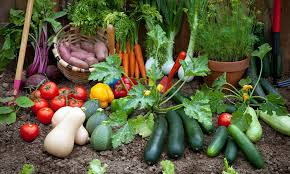Vegetable Gardening

Topic: Vegetable Gardening: The Joys and Rewards of Vegetable Gardening: Vegetable gardening is more than just a hobby; it's a rewarding journey that connects us with nature and provides a bounty of fresh, nutritious produce right at our doorstep. Whether you have a spacious backyard or a few pots on a sunny balcony, growing your own vegetables can be a fulfilling and sustainable practice. Why Vegetable Gardening? 1. Fresh and Nutritious Produce: One of the greatest pleasures of vegetable gardening is the ability to harvest and enjoy fresh produce straight from the garden. Whether it's crisp lettuce for salads, juicy tomatoes for sandwiches, or vibrant bell peppers for stir-fries, homegrown vegetables are unmatched in flavor and nutritional value. 2. Connection with Nature: Tending to a vegetable garden a...












